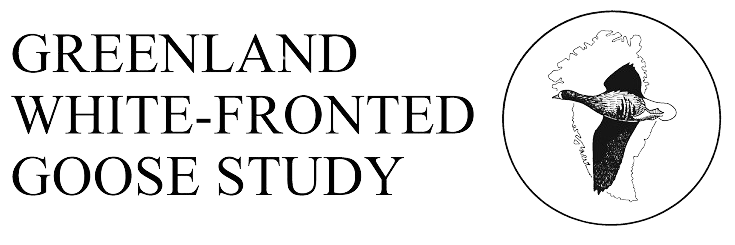History
Apparently unknown before 1968 when the first (single) bird was reported from the site. The status of this group remains obscure, because even to this day, the area where the birds occur around Grindon Lough is not especially well-watched by birdwatchers. The possibility remains that this may have been a long established but overlooked flock, because a single flavirostris was seen here in February 1981, 8 White-fronted Geese unidentified to race were reported in January 1975 and 4 more in January 1983. Since 1991/2, there have been between 4 and 16 Greenland White-fronted Geese wintering at the site ever year. Even now, many reports relate to geese not assigned to race, but the arrival in October and departure in April contrasts records of Russian White-fronted Geese from the county that cluster in the middle of winter. Visual conformation of racial characteristics on individuals also confirms these as Greenland birds.
Status
National importance (not mentioned by R&O). This is the only regular wintering site of its type away from the stragglers associated with Pink-footed Geese on the Lancashire Mosses in England. Numbers are very small (5-17 in recent years), but show extreme fluctuation, perhaps suggesting alternative undiscovered feeding areas in the area which could explain why this flock was not discovered as a regular resort in earlier times.
Maximum winter counts:
Breeding success
Assessment of breeding success has not been regular at this site.
Feeding sites and habitat
The geese feed on fields surrounding Lough Grindon (NY 804677), which are situated on a small area of limestone with relatively fertile soil; the surrounding unimproved grass pasture fields are mostly grazed by sheep and cattle though some are also improved and cut for silage. The Whitefronts feed separately from the other geese which frequent the general area and roost together on the lough, preferring the poorer drained fields with more Juncus encroachment, but may also use the silage fields favoured more by the Greylag Geese. The geese will forage 5-6 km from the lough (and potentially to an unknown extent further afield) which complicates monitoring. Favoured areas away from the Lough include Gibbs Hill at NY 750684 and (notably during W/SW gales) 3km northeast at NY816697 where they are able to feed in the lee of a shelterbelt. Whether the flock remains during cold weather (a significant factor at this altitude) is not known, as access to the lough becomes difficult in ice and snow, making observations difficult.
Roosting sites
The Greenland Whitefronts roost on the lough with other geese (mainly Greylag Geese, both wintering Icelandic and local feral birds, and feral Canada Geese, a few hundred of each).
Habitat change
None known to affect the geese.
Aircraft disturbance: Not known to be a problem.
Hunting disturbance: Not known to be a problem, there is apparently no shooting in the vicinity of the lough that would likely disturb the geese.
Agricultural disturbance: Not known, but highly unlikely to be a problem with this flock that feeds well away from farmland for most of the time.
Site safeguard
Grindon Lough is leased by the Northumberland Wildlife Trust and managed as a reserve, though the surrounding fields do not have any formal protection other than by being situated within the Northumberland National Park.
Threats
None known.
Linkages with other sites
No marked individuals have been seen at this site.
References
Frankis, M. (2003) The regular occurrence of wintering Greenland White-fronted Geese Anser albifrons flavirostris near Grindon Lough, in northern England. pp. 15-17. In; Fox, A.D. & Francis, I.S. (eds). Report of the 2001/2002 national census of Greenland White-fronted Geese in Britain. GWGS, Rønde.
